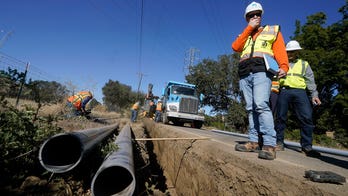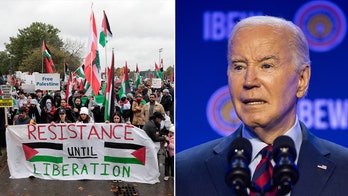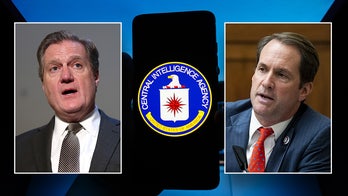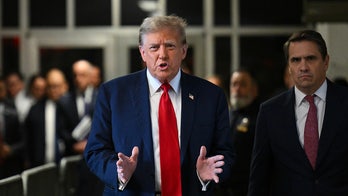Biden makes case for $1.9T coronavirus relief package
January sees grim jobs report amid the coronavirus pandemic; Lucas Tomlinson reports on the latest.
The White House reinstated regular presidential addresses fashioned after FDR’s "fireside chats," releasing a video Saturday where President Biden called a woman in California who had been laid off during the coronavirus pandemic.
Michele Voelkert told the president she’d been laid off for "the first time in my life" from her job at a San Francisco-based clothing company.
"Working is part of who you are," Biden told Voelkert in a video posted to Twitter and the White House's other social media accounts. "Like my dad used to say, a job is about a lot more than a paycheck. It's about your dignity, it’s about your respect, it’s about your place in the community."
"The idea that we can keep businesses open and moving and thriving without dealing with this pandemic is just a nonstarter," the president said, before touting his COVID economic relief package.
BIDEN SAYS 'NO NEED' FOR TRUMP TO RECEIVE INTEL BRIEFINGS
He pointed to provisions including mortgage payments, unemployment insurance and rental subsidies, and the White House's promise to have 100 million COVID vaccine shots in the arms of Americans in 100 days.
"This is a time-honored tradition in the country of hearing from the president in this way," White House press secretary Jen Psaki told reporters Friday of the fireside chats. "President Biden will continue that tradition, and we expect it to take on a variety of forms."
BIDEN MAKES CASE FOR $1.9T STIMULUS PLAN
Franklin D. Roosevelt first began weekly "fireside chat" radio addresses to speak directly to suffering Americans and explain the administration’s policy decisions during the Great Depression. The first chat aired March 12, 1933.
Ronald Reagan revived the tradition and it continued with Bill Clinton, George W. Bush and Barack Obama, who delivered remarks on YouTube nearly every Friday.
CLICK HERE TO GET THE FOX NEWS APP
Donald Trump continued the tradition in the early months of his administration, but eventually stopped as the White House said it felt the format was "not used to its full potential." Trump preferred to speak to Americans through Twitter, in off-the-cuff comments to reporters and at rallies.





